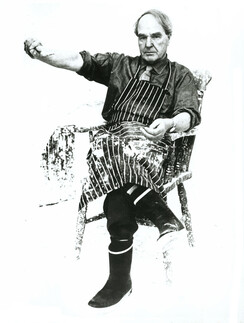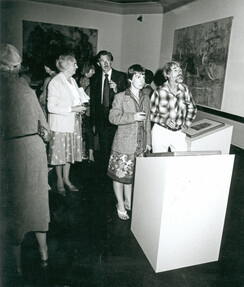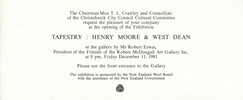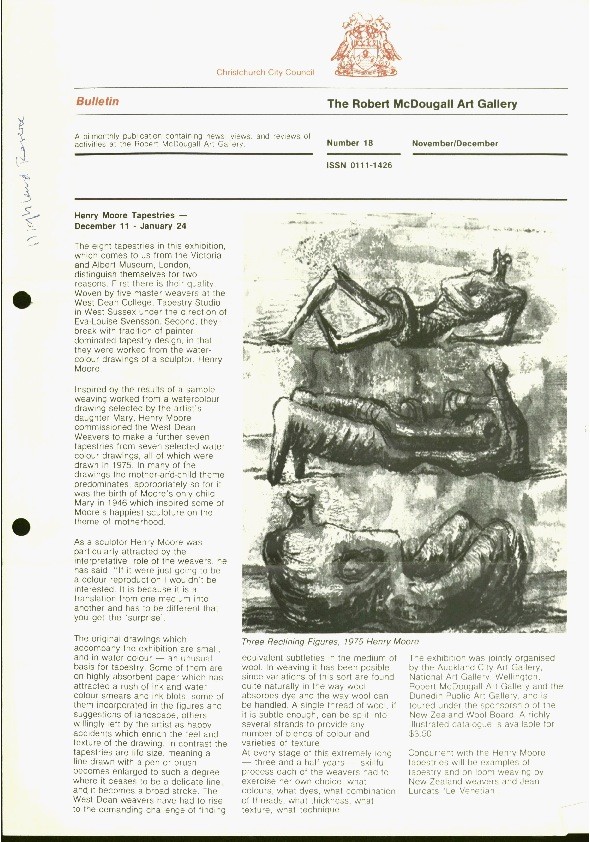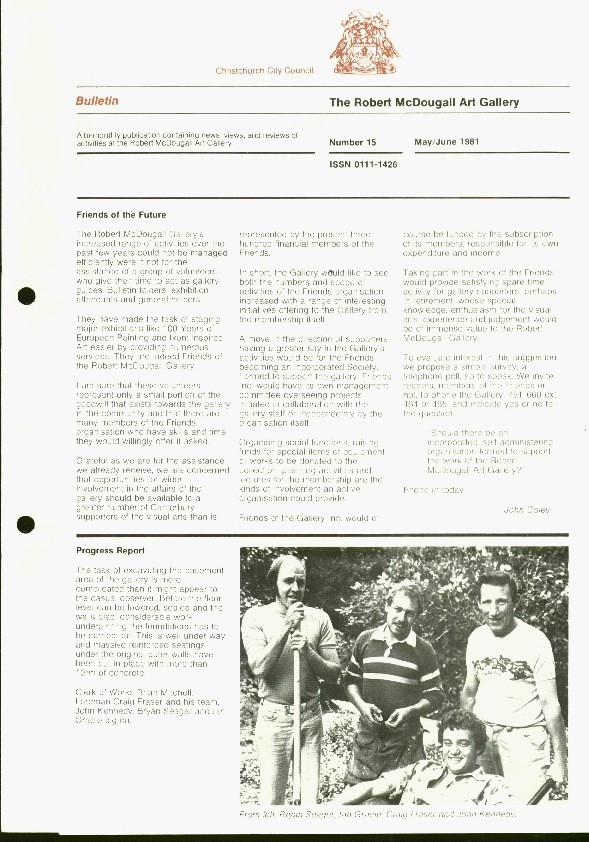This exhibition is now closed
Henry Moore Tapestries
11 December 1981 –
24 January 1982

Front cover of the invitation to the opening of Henry Moore (detail)
Eight tapestries from the Victoria and Albert Museum inspired by the watercolour drawings of sculptor Henry Moore will be on display. Five West Dean College Weavers have skilfully interpreted these works in the medium of wool.
The eight tapestries in this exhibition, which comes to us from the Victoria and Albert Museum, London, distinguish themselves for two reasons. First there is their quality. Woven by five master weavers at the West Dean College, Tapestry Studio in West Sussex under the direction of Eva-Louise Svensson. Second, they break with tradition of painter dominated tapestry design, in that they were worked from the watercolour drawings of a sculptor, Henry Moore.
Inspired by the results of a sample weaving worked from a watercolour drawing selected by the artist's daughter Mary, Henry Moore commissioned the West Dean Weavers to make a further seven tapestries from seven selected water colour drawings, all of which were drawn in 1975. In many of the drawings the mother-and-child theme predominates, appropriately so for it was the birth of Moore's only child Mary in 1946 which inspired some of Moore's happiest sculpture on the theme of motherhood.
As a sculptor Henry Moore was particularly attracted by the interpretative role of the weavers, he has said, "If it were just going to be a colour reproduction I wouldn't be interested. It is because it is a translation from one medium into another and has to be different that you get the 'surprise'.
The original drawings which accompany the exhibition are small, and in watercolour – an unusual basis for tapestry. Some of them are on highly absorbent paper which has attracted a rush of ink and water colour smears and ink blots, some of them incorporated in the figures and suggestions of landscape, others willingly left by the artist as happy accidents which enrich the feel and texture of the drawing. In contrast the tapestries are life size, meaning a line drawn with a pen or brush becomes enlarged to such a degree where it ceases to be a delicate line, and, it becomes a broad stroke. The West Dean weavers have had to rise to the demanding challenge of finding equivalent subtleties in the medium of wool. In weaving it has been possible, since variations of this sort are found quite naturally in the way wool absorbs dye and the way wool can be handled. A single thread of wool, if it is subtle enough, can be split into several strands to provide any number of blends of colour and varieties of texture.
At every stage of this extremely long – three and a half years – skilful process each of the weavers had to exercise her own choice, what colours, what dyes, what combination of threads, what thickness, what texture, what technique.
The exhibition was jointly organised by the Auckland City Art Gallery, National Art Gallery, Wellington, Robert McDougall Art Gallery and the Dunedin Public Art Gallery, and is toured under the sponsorship of the New Zealand Wool Board. A richly illustrated catalogue is available for $3 50.
Concurrent with the Henry Moore tapestries will be examples of tapestry and on loom weaving by New Zealand weavers and Jean Lurçat's 'Le Venetian'.
('Henry Moore', Bulletin, No.18, November/December 1981, p.1)
Location:
Robert McDougall Art Gallery - main gallery
Exhibition number: 270

